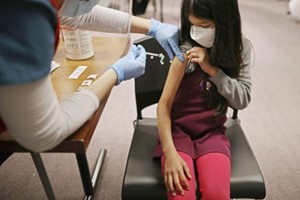Rapidly graying society providing vital lessons for ‘human security’
When the Spanish flu flared up just over a century ago, it claimed at least 50 million lives worldwide at a time when influenza vaccines were undeveloped and other treatments were ineffective. Society fragmented as people lost trust in government institutions and national health care services, which were just as ineffectual. The disease also killed a disproportionate number of young adults, which further shredded the world’s economy and social fabric.
Despite a far stronger health care environment and better immunization protocols, the COVID-19 pandemic similarly disrupted global society, killing close to 7 million people and infecting over 764 million, forcing governments, businesses and individuals to take radical measures to blunt its impact. While COVID-19 is on the wane, calls for governments to better shield their citizens from similar health care catastrophes are loud, clear and persistent.
Health is an essential element of people’s lives, social stability and economic development. Japan has a robust health care system and the life spans to prove it, boasting one of the longest overall life expectancies on the planet at 84.3 years. Many called on Japan to address other issues besides the Ukraine conflict at the G7 Summit in Hiroshima, and Japan readily agreed to make health care a priority. Japan had already laid the groundwork for an update on global health in August 2022 with the formation of a task force. During the last ministerial meeting of the COVID-19 Global Action Plan initiative in February — which involved the United States and more than 30 other countries, the European Union and various organizations — Japan formally announced this facet.
Leading by necessity
Japan is a logical choice for this spearhead role. The country’s robust health care system is inclusive and has a strong preventive care element. Since the 1950s, for instance, the Japanese government has promoted X-ray exams, made tuberculosis treatments free and expanded insurance coverage to preventive medications, such as hypertension drugs. Other examples of preventive care include free screening tests and prenatal and postnatal programs that include health and dental checkups.
Having health insurance in Japan is mandatory, and what people pay for coverage is typically based on income. Their contributions subsidize the system, which in turn subsidizes treatment, generally at a rate of 70%. Since spreading the burden minimizes medical costs, being driven into poverty by a medical condition or emergency is rare.
The government created an essential grid for health care in 1973 that may have potential in other countries facing similar imbalances in regional medical services. That’s when the Cabinet launched its “one prefecture, one medical school” policy to increase the number of medical schools and boost the number of physicians.
A similar policy specifically addressed a common geographic imbalance: a lack of rural physicians. Newly minted doctors would avoid less-populated rural areas, leaving them without proper medical care. Graduates from prefectural medical schools typically must commit to practicing for nine years in such regions. On completing that, their tuition is forgiven.
A rapidly graying population with all its attendant health care issues also makes Japan a test bed of sorts for new ways of handling elder care and end-of-life issues. For example, Japan has been dedicated to developing care robots for over two decades, including the technologies needed to handle both the physical and mental aspects of the job to offset the high numbers of elderly and the shortage of people available to care for them.










